Shoei Qwest Motorcycle Helmet Review
Smooth styling, sleek appearance, outstanding quality…
The Shoei Qwest build quality is a benchmark helmet that others should aspire to.
The Shoei Qwest was named the webBikeWorld 2010 Motorcycle Helmet of the Year!
UPDATE: November 2010 – Shoei Qwest Receives 5-Star SHARP Rating (see our SHARP rating page).
I used to think of Shoei as a very conservative helmet manufacturer, basking somewhat in the shadow of Arai.
Shoei execs will probably shudder at that comparison I’m sure.
But plodding along for half-decade or so with the X-11 and RF-800/RF-1000 series and milque-toasty offerings like the TZ-R just doesn’t cut it (although the Qwest may be the TZ-R’s replacement).
But then a sneaky Shoei staffer plumbed a keg of Red Bull into the office water supply.
That’s my only explanation, because within the space of a year we not only have a completely revised RF-series with the RF-1100, we also get the Shoei X-12 replacement for the antique X-11.
And now along comes a brand-new helmet series with the Shoei Qwest.
Here’s the bottom line folks: the Shoei Qwest is everything the RF-1100 and the X-12 should be and could be.
Both of those helmets are, quite frankly, overpriced and overweight, but the Qwest is a marvel.
As far as I’m concerned, anyone choosing an RF-1100 would be much better off with a Qwest. The Qwest has the same or better build quality; the vents are less fussy; it’s quieter; it’s lighter and, best of all, it’s $155.00 cheaper!
So what does Shoei do with this marvel of modern noggin protection? They handicap it with a “Touring” label. Ugh! I can see the advertising byline now: “The Shoei Qwest.Too old for a Sportbike? We have the helmet for you!”
It’s a conspiracy, Sportbike riders, and here’s my theory: Shoei is doing this on purpose to steer you away from what is probably the best helmet in their lineup.
It’s some type of weird reverse psychology marketing strategy…like calling a Durian a fruit.
Obviously, they have all those unsold RF’s and X’s in the warehouse, and when motorcyclists find out how good the Qwest is in comparison, Shoei will end up with…a lot of rotten Durians on their hands.
And there is nothing — absolutely nothing — in this world that is worse than a rotten Durian.
But now you know — the secret is out. Uh-oh…I hear someone in the bushes. They’re out there. They’re watching me. They’re coming for me….
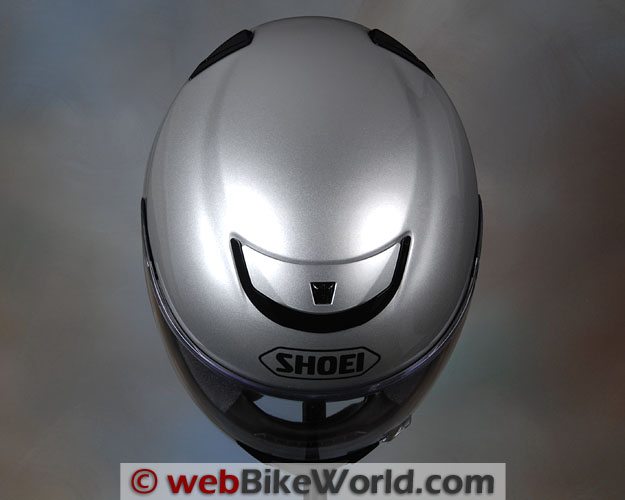
Where to Buy Shoei Qwest Helmet
Check Reviews & Prices on Amazon Check Reviews & Prices On RevZillaSee More Motorcycle Helmets, Motorcycle Visor, Motorcycle Intercom
Shoei Qwest Paint, Graphics and Overall Quality
Granted, I’m working with just one example here, and in the prosaically named “Light Silver” at that. So it’s difficult to generalize on the quality of the paint and graphics across the entire Qwest spectrum.
But about those graphics… It’s probably a good thing that the first batch of helmets released for sale is in Touring shades of gray.
The Qwest graphics displayed on the Shoei website look pretty awful to me; obviously another factor in the plot to keep Sportbike riders from the helmet they really need.
This is one time I’d advise to keep the extra 100 bucks in your pocket and buy a Qwest in a solid or metallic because the Qwest actually looks much better in that dress; it compliments the modern architecture of this sleek and inspired design.
Too bad they don’t offer more solid colors — perhaps a bright metallic orange or high-viz yellow?
Let me digress here slightly. When considering the Qwest, it’s almost like Shoei deconstructed the motorcycle helmet and completely redesigned it, putting it back together again with 21st Century mojo.
Every little piece on this helmet is familiar but just seems better, more intuitive and of higher quality than probably any other helmet we’ve seen in 2010.
And I’m only using that weasel word “probably” because it’s still only October and, in theory at least, it is possible that we might find a helmet to top this one before the final quarter is out.
Anyway, that’s the vibe I get from the Qwest. It seems to make other helmets feel instantly old-fashioned-looking. The more I handle it, the longer I wore it, the more I realized how different — yet similar — this helmet is to everything that’s come before.
All of the parts work in a sort of harmony, from the overall design to the sturdy-feeling clearcoat to the ingenious face shield mechanism that maintains a tight seal against the surround-me eye port gasket.
But probably the best feature of the Qwest is the liner.
The padding and choice of plush fabric is everything we have been hoping for after a hot summer of too-scratchy helmet liners, such as the rather disappointing material used in the new RX-Q.
We thought perhaps some new environmental law or material shortage was preventing the manufacturers from producing that nice baby-soft fleece of old, but Shoei must have scored a new supplier, because this is exactly how motorcycle helmet lining should feel.
OK, I’m gushing here. You get the point. I like it.
Score: I’ll give the Shoei Qwest an “Outstanding” for paint (in solid colors), clearcoat and overall fit and finish. Just don’t stare too long at the versions with graphics, you’ll start to feel queasy.
See the Summary Table at the end of this page for a description of our rating system.
Where to Buy Shoei Qwest Helmet
Check Reviews & Prices on Amazon Check Reviews & Prices On RevZillaSee More Motorcycle Helmets, Motorcycle Visor, Motorcycle Intercom
Shoei Qwest Helmet Fit, Internal Shape and Liner
In fact, unlike the RF-series, the Qwest is actually a pretty good fit on my very round head shape, with just the tiniest amount of breathing room along the center of my flat forehead.
The size large Qwest feels snug along the sides, and overall I’d have to say that it’s another good fit replacement for my Arai Quantum (review) — that is, the original Quantum with the now-discontinued Arai Round Oval fit.
I’m very relieved at the news, because it took me so long to find the Quantum, which was the only helmet that actually fit me.
Now I have both the RX-Q (review) and the Qwest to choose from. Both of them fit my head shape and both are much better helmets than the old Quantum anyway.
I can’t imagine there will be many motorcycle riders who won’t fit in a Qwest, and the cheek pads are removable for possible customization with six different sized pads available.
OK, so the complete liner isn’t removable, but when is the last time you had a liner out of a helmet?
The lining in the Qwest is beautifully applied with some of the tightest tolerances and highest quality I’ve ever found in a helmet.
The padding is also Chez Posh DeLuxe, with dual-layer foam and that very plush and cushy lining material that we thought was a thing of the past. It’s the type of interior that Arai used to offer and which I expected to find in the RX-Q but didn’t.
Most helmets that are put through the webBikeWorld evaluation process, including helmets at nearly twice the cost of the Qwest, usually have one or two flaws in the liner.
Loose threads perhaps or material not correctly molded, shaped or sewn for the interior curvature or a mis-alignment between the fabric lining and the EPS are very common issues.
Not in the Qwest though; I have actually spent more than a few minutes shining the all-powerfulClearwater “Andie” flashlight inside, marveling at the construction. Nerdy, I know, but part of the job.

For some reason, it’s become more difficult recently to pin down helmet shapes and the Qwest is yet another example that seemingly spans the “Neutral” and “Slight Round” categories.
Thus, I made a new graphic for the Shape Estimator chart shown above so we can span two categories if necessary.
The chin strap on the Qwest uses the same comfortable material for padding to protect the neck and the helmet has the light, simple and elegant double D-ring attachment system with a heavy-duty snap for the loose end.
The liner also has open ear pockets with a plastic backing towards the outside. The pockets are slightly indented and should be the right size to fit a variety of motorcycle intercom speakers.
More information on helmet fit can be found in the webBikeWorld Motorcycle Helmet FAQ page.
Also, see the chart that lists the helmet weights of webBikeWorld reviewed helmets and also by shape on the webBikeWorld Motorcycle Helmet Shapes page.
Score: I’ll give the Shoei Qwest an “Outstanding” for an internal shape that should fit a wide majority of head shapes, a very comfortable liner, padding and material and overall quality.
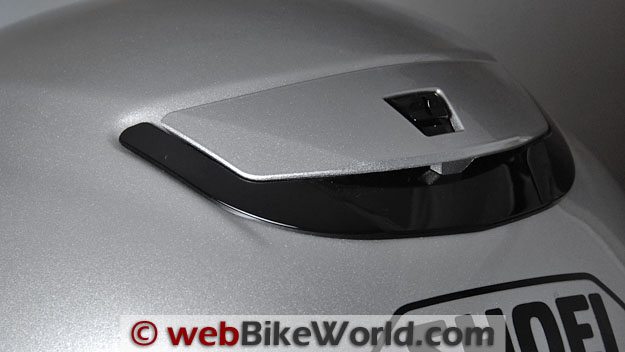
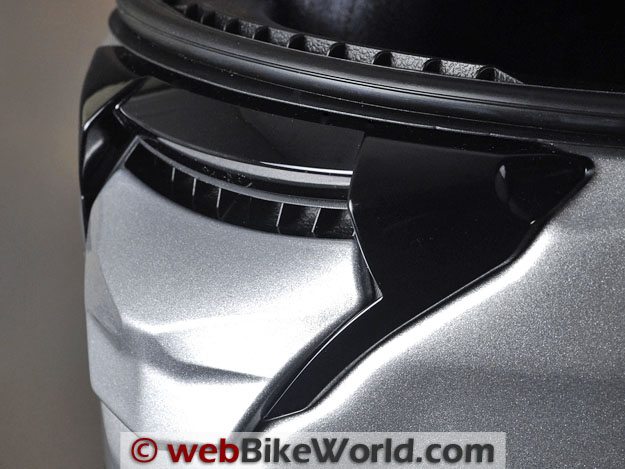
Shoei Qwest Face Shield, Eye Port and Visibility
The Qwest provides excellent visibility, with better than average vertical sight lines and slightly better than average lateral vision.
The helmet also uses a newly designed face shield, according to Shoei. The CW-1 shield is claimed to be “both wider and taller than the CX-IV that it replaces”. Shoei also claims that the shield filters 99% of UVA and UVB light.
We measured the face shield at 2.21 mm thick and it has excellent optical qualities. It is also labeled as meeting or exceeding the VESC-8 face shield standard.
Shoei also said the face shield is ready for the special Shoei Pinlock anti-fog insert (review), although there are no Pinlock installation posts on this one so I’m assuming the Shoei version of the Qwest Pinlock is the stick-on type.
Other Shoei face shields have responded very nicely to our favorite anti-fog coating, the easy-to-use Clarity DeFog It (review) and I’d expect this one to be no different.
The weather here is just starting to turn to a point where we’ll be able to evaluate the original equipment anti-fog prevention treatments once again.
The Qwest uses the Shoei “Q.R.S.A.” (Quick Release Self-Adjusting) base plate rotating mechanism for the face shield. This is an excellent system, albeit with a few more moving parts than other types.
It is spring-loaded, so it helps keep the face shield tight against the 360-degree full-surround eye port gasket.
The sealing capability and the gasket keeps out all of the water that might otherwise enter the helmet and the Qwest passed our drip test with flying colors.
The spring-loaded mechanism works by keeping pressure on the face shield against the gasket, so water that runs along the top of the shield is directed past the eye port itself and right out the sides of the helmet.
Also, the carefully molded shield has a slight inward chamfer at the top to further reduce the ingress of water.
The only slight downside to this system is that the owner should be a bit cautious with removal and installation of the face shield, making sure to align the two small tabs on the shield to their receivers in the base plate.
The Qwest also has a face shield lock and lift tab on the lower left side.
When it is pressed upwards towards the rear of the lever, the face shield is locked in place. The center position is “neutral” and the lower position opens the face shield forward approximately 2 mm to the “city position”. This is just enough to allow some defogging and ventilation.
Even the main lift tab on the Qwest got a re-think. It has an interesting three-dimensional curved shape that actually feels good because it closely fits the shape of the rider’s finger.
The tight tolerances used on the face shield system and the location of the lift tab result in a slight torque or twist in the shield as it’s raised or lowered, but this is a very small price to pay for what is otherwise a benchmark system.

Score: I’ll give the Shoei Qwest another “Outstanding” rating for the overall quality and operation of the face shield and eye port.
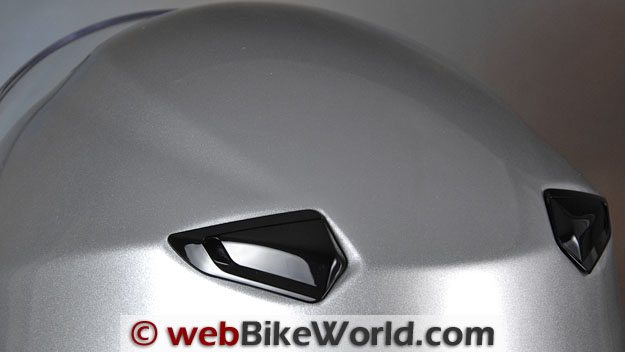
Ventilation and Air Flow
Shoei claims to have spent a great deal of time in the wind tunnel to optimize the shape and ventilation of the Qwest, but the work wasn’t quite as successful as I’d hoped.
Starting on the inside, the EPS liner is channeled to allow the air to pass through and out the dual rear exhaust vents (both independently operated) and there are a total of 8 very clean vent holes that can be seen in the EPS in the top of the helmet.
Those holes are an indication of the quality of this helmet; most manufacturers simply pop a couple of holes in the EPS without chamfering or without even cleaning out the bits of foam.
It usually looks pretty ugly and more than once we’ve had to use a pick to clean out the holes to allow the air to flow correctly through.
Another common problem is when the spaces in the helmet liner aren’t lined up correctly and the liner blocks the very holes that are supposed to allow ventilation.
Not so in the Qwest.
It’s a small detail but a very telling one — the holes are perfectly round, with perfectly trimmed edges, perfectly lined up in rows where the spaces in the liner are placed to allow the air to flow through.
Even the EPS is treated with some type of coating or paint on the inside, another small touch that lends an air of high quality and poshness (is that a word?) to this helmet.
Look inside a Qwest and look inside any other helmet and I’ll guarantee you’ll be impressed.
So does this attention to detail give the helmet top-notch ventilation? Well, yes and no.
The new thinking by Shoei also meant a redesign of the top vent, and although it looks modern, with a shape somewhat like Gort’s viewport and the on/off switch has a quality tactile feel, the actual vent under the switch is so tiny that I can’t even find it using a flashlight.
So the air comes into the helmet — sort of — but not at the volume I would like and, in fact, the top of my head can get warm when riding on hot days.
Besides that, the vent isn’t all that quiet, making a continuous noise that sounds exactly like someone’s tearing of a very long piece of paper in the next cubicle.
The volume and frequency remains the same whether I’m sitting upright or leaned forward.
The chin vent uses a very positive-feeling cover that clicks open and closed. It directs air through the top of the chin bar only; the Qwest has no vents through the chin bar itself.
This is good news perhaps for intercom users; install the chin curtain provided in the box (along with a breath guard and I’m not sure why they didn’t install these at the factory) and you should have a pretty decent sound chamber for a microphone.
The ventilation provided by the chin vent is very good, flowing air on to the back of the face shield and from there on to the rider’s face.
Shoei also claims to have molded channels on either side of the liner for eyeglass wearers, but I can’t find them. I can slip a pair of thin wire frame eyeglasses inside but my everyday eyeglasses don’t fit.
However, this is highly variable and dependent upon eyeglass type and the match between the rider’s head shape and the helmet.

Score: I’ll give the Qwest a “Very Good” rating overall for ventilation with a wish that the top vent intake was able to fully exploit the internal ventilation system.
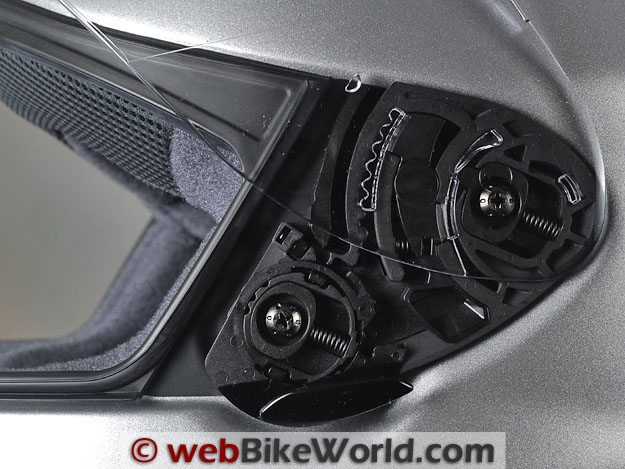
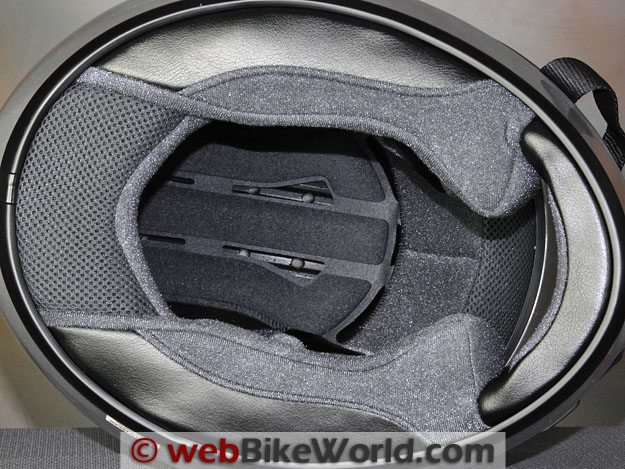
Where to Buy Shoei Qwest Helmet
Check Reviews & Prices on Amazon Check Reviews & Prices On RevZillaSee More Motorcycle Helmets, Motorcycle Visor, Motorcycle Intercom
Shoei Qwest Sound Levels
Overall, I’d have to say that the Qwest is a very quiet helmet, with excellent noise control. Shoei goes to great lengths to describe the work that has gone into this aspect of the helmet.
The noises that can be heard are very muted; the “tearing paper” noise coming from the top vent is there, but not bothersome.
Shoei also talks about the attention paid to the lower part of the helmet, an area that can be the cause of increased noise levels.
The design of the helmet and the neck roll does seem to block the buffeting noises commonly heard.
But I was surprised to have a constant low-pitched wind rushing noise coming from the bottom of the helmet that remains at about the same volume whether I’m riding behind a windscreen or not.
Now this may be due to my neck and head shape combined with the helmet fit, and certainly noise levels can be highly subjective and will vary based on many unusual factors, up to and including, believe it or not, the type of clothing the rider is wearing.
So again, we found that overall, the Qwest is a relatively quiet helmet but not as quiet as I’d like.
Also, individual perception of noise levels is extremely variable and depends on helmet fit, motorcycle type and other factors.
Note that some owners have found that the top vent can cause a whistling noise when riding behind a fairing or windscreen that directs air at the upper part of the helmet. [UPDATE: See the comment from Shoei regarding this issue in the Owner Comments section below.]

Note that our helmet evaluations are a combined effort of several riders over time on different types of motorcycles with and without windscreens.
Evaluators wear correctly fitted, high quality ear plugs (even when evaluating motorcycle intercom systems).
Always protect your hearing when riding a motorcycle. See the wBW Earplug Reviews for more information on choosing and wearing earplugs.
Note also that perceived noise levels will vary, depending on the individual.
Noise can be caused by many factors, including helmet fit, the type of motorcycle and windscreen, wind speed and direction and even the rider’s clothing.
For more information on helmet noise, visit the wBW Motorcycle Helmet Noise page.
Score: I’ll give the Qwest a “Very Good” overall rating for noise control.
Helmet Weight
The Qwest helmet shell is made with Shoei’s “AIM+” fiberglass composite, claimed to include “organic fibers that are so strong they can only be cut with a laser”.
The shell is very stiff, as you can see in the video, yet the helmet is light in weight.
The size large Qwest shown here weighs 1648 grams, currently placing it as 77 out of 149 helmets weighed by webBikeWorld.com.
We’re mixing chalk and cheese here because some of the helmets weighed are size XL and some size L and we have very few size L comparisons in the 150 gram range.
However, the Qwest compares very nicely with other size L helmets, such as the Bell Star 2010 at 1628 grams; the Craft R2 Aerospeed which, at 1660 grams, was considered a lightweight helmet when it arrived.
Also for comparison, the Shoei X-12 in size XL weighed 1766 grams and the XL Shoei RF-1100weighed 1746 grams.
Shoei uses an amazing 5 different shell sizes to span the range of Qwest head sizes. This means that each head size should have a shell that is proportional, helping to avoid the “fishbowl” or “astronaut” helmet effect of a too-large helmet on a small head.
We don’t have the shell-to-head size chart for the Qwest, but I’d have to assume it’s the same as the RF-1100 and X-12:
| Shoei Qwest Shell Size Chart (Estimated) | |
|---|---|
| This Head Size… | …Uses This Shell Size |
| XXS and XS | XS |
| S, M | M |
| L | L |
| XL | XL |
| XXL | XXL |
The size large Qwest is listed as fitting a 59-60 cm head and I’d have to agree, even though my 60.5 round shaped head fits comfortably, if a bit tight on the sides (which is actually preferred as a ‘race’ fit).
The helmet is perfectly balanced and seems to slice smoothly through the air with no undue buffeting or lift that I have noticed.
All of these weights are available on the wBW Motorcycle Helmet Weights page, along with a chart that lists the helmets by weight and shape on the wBW Motorcycle Helmet Shapes page.
Score: I’ll give the Shoei Qwest an “Excellent” rating for relatively low weight compared to other helmets.
Miscellaneous
The Qwest meets both DOT and Snell 2010 standards when sold in the U.S. I’m not sure, but the Qwest may be a North American helmet only; I don’t see an equivalent sold in Europe.
The helmet carries a five-year warranty or alternatively a seven-year warranty from the date of manufacture, whichever comes first.
| webBikeWorld Overall Opinionator – Shoei Qwest | |
|---|---|
| Picks… | …and Pans |
|
|
Conclusion
The Shoei Qwest is one of the nicest helmets I’ve worn in the 10+ years of webBikeWorld.com reviews.
It combines sleek and modern good looks with class-leading quality and comfort and noise control; solid and secure operation; and an excellent face shield system.
This is all simple stuff that very few get completely right, thus the “benchmark” label.
Combine all that with a price that is currently $155.00 less (list) than the Shoei RF-1100 and throw in the Shoei five-year warranty and you have a helmet that is both a benchmark and which surely is a front-runner for the 2010 webBikeWorld Helmet of the Year Award!
| wBW Product Review: Shoei Qwest Helmet | |
|---|---|
| Manufacturer: Shoei Co. Ltd. | List Price (2010): $369.99-$469.99 |
| Colors: Varied | Made In: Japan |
| Sizes: XS-2XL Shell Sizes: 5 | Review Date: October 2010 |
|
Rating Scale is subjective: Unacceptable, Poor, Neutral, Very Good, Excellent, Outstanding.
|
|
Note: Item provided by a retailer, distributor or manufacturer with these Terms and Conditions.
Where to Buy Shoei Qwest Helmet
Check Reviews & Prices on Amazon Check Reviews & Prices On RevZillaSee More Motorcycle Helmets, Motorcycle Visor, Motorcycle Intercom
Owner Comments and Feedback
See details on submitting comments.
From Shoei (July 2013): (This comment is pinned) Editor’s Note: Some owners have reported regarding excessive noise levels with the Qwest.
We stand by our detailed evaluation of the helmet and the results reported in the “Sound Levels” section above, but I asked Shoei to comment and this is their reply:
“Sound levels within helmets are very difficult to test and when developing new helmets, Shoei does everything they possibly can to maximize airflow and reduce noise.
As you can imagine there are many variable that will affect airflow and internal noise. Some of these variable include the type of motorcycle, the shape of its fairings, rider’s height, rider’s position, environmental factors, etc.
Everything from the head shape to the type of bike can effectively alter the riders experience of sound levels.
We didn’t receive any noise complaints from the top vent of the Qwest during initial testing and release. Shoei Japan informed me that during usage some of the shields and shield bases may need to be adjusted.
This may have an effect on the noise levels our customers are experiencing.
Adjusting these mechanisms can be a bit tricky for the average person and we recommend that they contact our customer service team for help solving any of these issues.”
From “F” (September 2014): “I’ve got 3 other helmets, a Shoei XR1000, Shark S800 and Shark Vision R Series 2. This Shoei Qwest I’ve owned for 1 day and my immediate observations are these.
It’s noisy. Huge amount of noise from the bottom of the helmet at 30 mph is the equivalent to about 60 mph in other helmets. Lift up your shoulders and the wind noise stops so I fitted the Shoei Whisper Strip from my XR1000 and solved that problem.
Rear vents are also noisy. Producing a wind rush noise and a whistle. I now ride with them closed. Top vent seems quiet, chin vent works well and you hear/feel the rush of air but it’s not loud, just audible.
Sprung assisted visor side plates are very fiddly to adjust. The last detent pulls the visor closed against the neoprene rubber seal. Best advice to adjust them is to loosen both side plates, fit visor and close it.
Apply pressure on visor so it sits against the seal and note position of side plates. Remove visor and try to reposition the side plates how you saw them. Trial and error.
Visor demist position is sprung loaded so visor moves slightly forward instead of the usual up movement but works ok despite only moving 1-2 mm.
Typical Shoei fit, feels very comfortable to wear and of good overall quality. Double D ring chin strap very nice and perfect position unlike Shark helmets that cut against your throat, Shoei’s chin strap causes no problems. Good length strap too.
Good upper visor visibility, better than XR1000, and side vision good also. Pinlock doesn’t intrude in vision.
So far my impression is of a good helmet, excellent quality and with 7 visor detent positions, visor also has minimum flex.
Essential to fit the Shoei Whisper Strip to combat wind noise, open vents at rear if needed but otherwise keep them closed and you have a comfortable, reasonably quiet helmet.”
From “A.K.” (October 2013): “I owned the Qwest for almost a year, and loved the way it fit my head. It was also perfect for my somewhat upright riding position, and was one of the quiet and nicest helmets.
But it had three issues that eventually made me happy to get rid of it and trade up to a different brand.
First, the weight. Originally it was ok but with the emergence of carbon helmets it felt more and more like wearing a brick on your head. A well-fitting, comfy, quiet brick.
Second, its aerodynamics. Looking straight ahead, it was perfect, but turning my head at speed always caused an unpleasant push to the side, from the oncoming air.
Not enough to drive me crazy but enough to become an annoyance over time.
And, last but not least, the stink. Over time it started smelling, worse and worse, and not being able to remove the liner to wash / dry it became a huge problem. It doesn’t seem like a big deal when it’s brand new but becomes a big deal over time.
Eventually I traded up to Nexx Carbon (review), which is a much better helmet: very light, aerodynamically perfect (no more annoying wind push when turning head), and easily cleaned.
It has its own problems (noise and whistling at speed), and is probably not the best value these days, but is a day and night difference compared to Qwest.”
Editor’s Note: Helmet stink? Read the Motorex Helmet Care review. Also, helmet “push” can be caused by an incorrect match between the rider’s head shape and the internal shape of the helmet. It can also happen if the helmet is too big for the rider’s head.
From “S.H.” (September 2013): “After a year of using this helmet and trying nearly everything possible to stop the wind noise i have given up.
I have tried everything from the chin curtain the whisper kit and neck scarf a different visor fly screen, no fly screen no visor, changing my riding position changing my jacket, using every kind of ear plug possible. I have had enough. Such a shame as its a lovely helmet and fits great.”
From “M.C.” (July 2013): “I was really happy with my Scorpion EXO-700 (review) but I found the venting caused a bit of noise, so I picked up a Shoei Qwest and rode about 3,000 km on it in the last 2 weeks.
I have to say the fit is the best I’ve ever had in a helmet, it felt like it was made for me. The finish was impressive too, in person it looks way better than in pictures.
As some others have said, this is actually the loudest helmet I’ve ever worn — louder than the half-helmets I used to wear when I drove a cruiser. I never drive without ear plugs and the noise is still unbearable, its as if the wind and engine noises are being amplified.
I unfortunately left on a 1500 km tour with this helmet and when I got back I had a splitting headache and my ears were ringing for a good two days straight.
I’ve tried adjusting it, triple checking the shield, adjusting my position on the bike, checking the vents, putting my hands on different areas of the helmet to isolate the noise, but its just a really noisy helmet.
As much as I hate to do it I’ve relegated this helmet to the shelf, its a shame because like I said the fit is great. Keep up the good work on the reviews!”
From “R.J.” (February 2013): “I’ve owned a Qwest for about 8 months and have taken it from the U.K to Switzerland and back as well as pressing it into regular use.
In terms of noise, I’d say it’s no quieter than my old AGV K series helmet (which I fitted with a“Windjammer” neoprene chin curtain (review)). Instead, on the Qwest, I fitted the Shoei “Whisper Kit” and the two helmets seem more or less equivalent.
I do use earplugs and find noise acceptable. So overall, no, it doesn’t seem to be a particularly quiet helmet, nor is it unbearable.
Having said that, the fit is extremely good after the “bedding in” period. It feels secure and comfortable at legal speeds and is balanced and stable. The front vents, both chin and crown work well. The rear vents don’t seem to make much difference.
The field of vision is very good, and the Pinlock does a good job, though the “whisper kit” does make it more prone to fogging at a standstill.
The visor tab would be easier to locate if it were in the 12 o’clock position, but overall the visor works very well. The finish is excellent and the lack of a removable liner a minor drawback.
In conclusion, I’d say it’s a secure, comfortable and well-made helmet.”
From “J.M.” (August 2012): “Hi I just wanted to add my two cents to your Shoei Qwest review… I’ve been using mine about 6 months now and previously had a Shoei RF-1000 (review) and Shoei X-11 (review).
The Qwest, or TZ-X as it’s known here (Australia) is horrendous. It’s so noisy I can’t hear my bike while cruising (Aprilia RSV4 with aftermarket pipe) and my hearing has been noticeably worse since getting it. It doesn’t matter if the visor is open or closed.
The ventilation is pathetic compared to my previous Shoei products, bordering on dangerous as it fogs up continuously and won’t un-fog, meaning I have to ride with the visor up and my eyes exposed.
I’d dump it and get a Shoei X-12 (review) (because the X-11 was awesome) but frankly it has me so concerned about Shoei’s products that im not sure I want to spent the $1200 it would cost me to try out. I’m stumped.
One of the other guys at work also has the Qwest helmet, and has the same issues with it…”
Editor’s Reply: Correspondence with J.M. revealed that ear plugs are not used. Also, the match of head shape to helmet shape/fit is one of the factors that can affect noise levels.
From “B.S.” (July 2012): “Thought I would add my comments on the Qwest. It’s a good helmet. Picked it up after trying on and then checking your review, but skeptical after reading the user comments. Glad I ended up buying one.”
From “J.B.” (June 2012): “I just bought a Qwest. I join the ranks of riders who think this helmet is way too noisy. “JW’s” comment (below) that “Without the chin curtain… this helmet sucks”, pretty much sums it up.
After installing the chin curtain, closing all the vents (and wearing ear plugs as always) the helmet is now not bad from a noise standpoint. Losing the venting is a tough trade-off to make though in the heat of summer.
I have a Shoei RF-1100 (review) and an Arai Vector (review) and prefer either one over the Qwest simply because of the noise issue. First helmet in a long time I’ve been disappointed in.
I needed a new helmet for the track (drag strip) so maybe I will use the Qwest there and buy a different helmet for the street. On the plus side, the helmet looks nice, fit me fine and has the easiest shield removal system I have ever tried.”
From “P” (May 2012): “I recently took delivery of my new helmet, a Shoei TZ-X (Qwest) and, like some other owners, regret the purchase. I tried on lots of helmets, including a great looking Shark Race-R that unfortunately choked my adams-apple.
The Shoei’s are beautifully finished and fit me well so I chose the TZ-X over the XR-1100 in the vain hope it might be the quieter helmet.
Since helmet noise is a very individual bike/rider thing, I am 6 foot tall and ride a BMW R1150R with the small screen that comes with them in Australia.
The helmet being replaced, or maybe not now, is a SCHUBERTH sold by BMW as the Sportintegral. For comparison, the SCHUBERTH is the only helmet I have used with this bike.
I use ear-plugs for highway or higher speed riding but not for low speed around town riding. That is until now.
I fitted the chin curtain and tried it out without ear-plugs. Before I got to the end of my street I was thinking – what have I done? The noise was deafening. I took a short run on the motorway at 100 kph.
This was not good for my hearing. I fitted some ear-plugs and tried again. The results were similar to those in your review. I could now hear the ‘tearing’ noise from the top vent despite the fact that it doesn’t seem to let much air in.
And, I could now hear the front vent whistling. In comparison with the old Schuberth, the TZ-X is as noisy with ear-plugs as the SCHUBERTH is without.
The neck curtain / roll thingie that is standard on the SCHUBERTH seems to make all the difference on that helmet. I will now have to fit plugs for a 10 minute, 60kph ride to the local shops. I deeply regret this purchase.
Do I spend, or waste, another AUS$52.00 (maybe plus freight) for a Whisper Kit that may make little difference with this helmet? Is the fact that Shoei offer a Whisper Kit an admission that their helmets are noisy?
A friend who rides a Ducati Monster claims his XR-1000 is deafening.”
From “S.Z.” (October 2011): “I’ve had the Qwest now for a couple weeks. Some of the things I mentioned to you have resolved themselves. To start, for readers that may wonder, I ride with chin curtains and breath deflectors installed on all my helmets.
My forehead no longer shows a red patch on it after I take the Qwest off. I figure wearing it a couple times probably broke the EPS in just right.
Venting is noticeable from the top vent or the chin vent, more so from the chin vent, but I see no issue in riding in this helmet in the hot and humid Florida weather. That’s even before I cut my hair, and it was fairly thick.
Vents are solid, easy to find with gloves of any thickness, and click very positively.
Bell should learn from them on that respect.
Plus, it’s nice to only have to mess with two vents instead of four or five. People think you’re a bit strange feeling all over your head for your vent switches with your left hand while your riding. With the Qwest it’s “blip, blip” and you’re done.
I leave the rear extractors open full time. They’re a non-issue. Also. the chin curtain on the Shoei Qwest is enormous. It blocks wind from coming up thru the bottom of the lid better than any other helmet I own.
Other manufacturers take note. That’s an awesome feeling – no wind rushing up into your face! My Scorpion EXO 700 has a problem with that.
Paint is excellent. I have a solid in anthracite. Beautiful, but it should be given I have cheaper helmets that are also excellent in that area.
Interior comfort is nice and soft and fit is firm, perhaps a tad wide along the sides.
I give better fit to my former Bell RS-1, and my current Bell Vortex, but I would say the Qwest is a better fit than my 2010 Bell Star and my Scorpion EXO 700. The Qwest is more snug than my Scorpion but I would give the nod in comfort to the Scorpion over the Qwest.
Even though the softness of the fabric goes to the Shoei vs. the Scorpion, and even though I can tell the difference in weight on my head between the two. The shape is better for my head.
Remember that my Scorpion is the only size large I now own, but the EXO 750 I plan to get soon may turn out to be the best helmet at the best price, for my shape head, than any helmet I have ever owned, bar none.
I say this because I am confident that the adjustable cheek pads on the new EXO 750 will indeed make this the most quiet lid and most comfortable lid in my arsenal, as well as lighter in weight since it doesn’t have the Snell stigma.
Sound level I’d say is the same as my Bell Vortex. Pretty good, but my Scorpion EXO 700 beats them both. Of course, my Bell Star is a howler in this category.
The RS-1 is quieter than all above mentioned lids, at least on my noggin. I think the superior fit of the Bell RS-1 is the culprit.
I’m still on the fence whether I’ll ever trust Bell’s QC again. It boggles my mind that of all the Bells I own, my cheap Vortex has the best paint and quality. A very solid lid.
I installed my U-Clear comm unit into the ear pockets of the Shoei Qwest. At speeds above 40mph you struggle to hear music playback vs. wind noise. Again, I am riding a 2011 Kawasaki Ninja 1000 and I tested the helmet with the wind screen in both up and down positions.
In the up position the wind caught the neckline of the Qwest and drastically increased the perceived noise level at any speeds. I then re-mounted the speakers from the U-Clear.
I did this by filling in the ear pockets with the foam inserts that come with my Bell Stars. I mounted the speakers onto the fabric of the cheek pads. This brings the speakers almost directly in contact with my ears (almost) and the sound level more than doubles.
The Velcro on the back of the speakers holds them nicely in place. This adjustment killed a ton of wind competing for my ears, but I can still hear ambient noises such as approaching cars, sirens, etc.
In hindsight I think the Sena a better purchase since you can buy the adapter that accepts earbuds. But that’s nothing to do with the Shoei Qwest, so my apologies for taking a side street for a second there.
Would I recommend the Shoei Qwest. Absolutely. It’s a quality helmet, decent noise suppression, very comfortable, vents adequately, and has a decent price.
It also feels relatively light and very balanced on the head, which makes it great for longer hauls.
I agree that this helmet is a sleeper in the Shoei lineup. I’d buy this over their RF-1100 any day of the week. Is it the one for me? Nope. I think head shape is slightly off and that creates the noise that really if it fit correctly I would be positive would not exist.
There is mostly a side wind rush sound that is a constant with the Qwest in my case.”
From “M.M.” (August 2011): “Just bought a Qwest after doing much research and comparing helmets. Loved the fit and all the features of the helmet. I was considering the HJC RPS-10 but the Shoei fit my head better.
Finally got to ride with it and was completely shocked at how loud it is. It’s much quieter with the shield open than with it fully closed!
There’s some sort of echo or buffeting going on that’s caused by the wind under the chin. It was so loud that I rode the rest of the way with the shield cracked open.
I read some of the user reviews (after this of course) that experienced the same thing. I got home and installed the chin curtain and went out again. It was better but still too loud. My ears are ringing from the ride!
Love the fit of the helmet and the design but can’t take the noise. I’m taking it back and now I’m on a search for a helmet again!”
Editor’s Note: M.M. was not wearing ear plugs (I asked).
From “M” (05/11): “I just rode thirty five miles home from work with the Shoei Qwest and have decided that it’s so loud I cannot use it anymore. Just to see if I was crazy I took the helmet off and hung it on my mirror for a few blocks on the way home.
Regarding noise, I’m better off without the Qwest on my head.
I ride a KLR 650 with a 17” windshield and I wear earplugs that are more than adequate at work. The Qwest takes every noise and makes it painfully louder.
I came from an HJC CL-12 to this helmet and while the CL-12 was bad, the Qwest is so loud I have genuine concern for damage to my hearing. I may drive my truck to work tomorrow rather than ride as my ears are still ringing 1/2 hour after having returned home.
I have ridden with this helmet for over 1000 miles and tried “clean” air, holding my head up and down a few inches etc. and it’s just painfully loud. The only way to moderate the noise is to open the Quest’s face shield partially.
The Qwest has horrendous wind noise and it amplifies every mechanical sound around me.
In addition the windshield mechanism rattles as though there are bb’s in it when it’s all the way open. I don’t think I will be buying any more “high-end” helmets. $330 is enough of a learning experience for me.”
From “J.W.” (10/10): “OK, so I got the new Shoei Qwest. I’ve spent several hours dinking around trying various old helmets in my garage vs. the Qwest, playing the vents, etc.
My current “every day” helmet is the Shoei TZR. It’s not a bad helmet, the key noise contributor is air somehow making noise along the sizes of the helmet.
I concluded this as if I do a big shoulder-shrug, cant the helmet to one side, or put my hand along the side of the helmet it gets very noticeably quieter. I got the Qwest in white – a couple reasons:
1) “They” claim that white is the safest most visible color; 2) I noticed the “nose vent” of this helmet looks stupid in some colors; white-on-white it looks fine; 3) White and black are the cheapest versions 😉
I bought it from (a retailer) as they will let me return it if I don’t like it also they had a 10% off sale so not too bad of a price. On the ride home I almost turned around and took it back. Holy crap Batman…this is not quiet at all :-/
I decided that since I had a week to mess around I would do so — how else was I going to waste the weekend, paying bills or something?
Anyway… compared to the RF1100 the “spoiler” and outside shape of the Qwest is much different; that “upright” riding position thing I presume It uses the same removable cheek pads as are used in the RF1100, $40 / set or so.
The cheek pad design is very good and seals out noise on the sides of the helmet — the big shoulder-shrug, cant the helmet to one side, or put my hand along the side of the helmet did NOT make the helmet very much quieter.
So where is the noise coming from? I messed with the all the vent positions no real change in noise level. Hmm, about to give up when I blocked the open space in front of my chin — mucho quieter.
Back to my house installed the chin curtain I had so casually discarded on the work bench. The design is nice and the back edge is contoured to go around your neck somewhat while the front attaches very well to the helmet.
On the road again, ahh very nice. I’m going to keep it. I’m warning you:
1) Without the chin curtain, I think this helmet sucks. If you don’t want to use the curtain, keep looking. I’m surprised not to have read this in any of the other reviews.
I’m also surprised that despite their very similar shapes, the Qwest is much louder than the TZR in this “comparison” area.
2) Of course my setup is different than everybody else’s so my comments may not apply to your riding situation. I’m about 6′ 1″ (with a ) 32″ inseam on a BMW F650GS twin. I have a Sargent seat that is 1″ – 2″ higher than stock seat.
I have cut the (none too tall to begin with) stock windscreen down about as low as it will go. I’m “almost” to naked bike.
My helmet is just above the “turbulent” air coming off the screen. If I scrunch down in the seat about 2″ or so the noise level goes way up as result of hitting the turbulent air.
Random comments: Besides sharing the same cheek pads as the RF1100 it shares the same screen. In the “slightly” vented position the entire screen moves forward just a bit. Some helmets just cock the bottom of the screen out a bit … this is better!
Of course the cheek pads come out, but the rest of the liner is fixed. Vents seem to work ok, but all my testing has been done at temps in the 60’s so the final decision is not in yet on venting.
I have to wait for a cold day and then see if I can freeze my head off. The vents to not seem to add much noise when open. ‘Your mileage may vary'”.
From “P” (10/10): “I have just bought a Shoei Qwest as Shoei claimed it was a lot quieter than previous models. I found the fit was good and I was happy with this helmet until I got up to speed as anything above 70 mph was very loud.
I have been riding motorcycles on a daily basis for 34 years and have used ear plugs for the last 20 years but I do suffer from Tinnitus.
In order to be fair to this helmet I went out with 3 of my other helmets to test them in the same conditions without removing my ear plugs when I changed over and the Qwest was noisiest of the 3 (XR-1000 with whisper kit, Shark Open line and a SCHUBERTH C2 ).
From the Qwest to the XR-1000 it was like closing a car window at speed. I feel like I have wasted £330 on this helmet, if I had had the chance to try one out I would not have bought it.”
From “B.M.” (10/10): “This may sound odd, but I’m almost glad the venting on the Qwest isn’t very good. Why? Riding in the mid-Atlantic, I consider venting very important.
Riding in 90+ degree temps and 80+ % humidity, poor venting leaves me feeling weak.
I’ve got a very narrow head. The only helmet I’ve found that really fits me well is the Arai Profile. No way the Qwest is going to fit me. So if the venting was as good as the rest of the helmet, I’d be insanely jealous. Now I can just ignore it.
For the life of me, I can’t understand why no manufacturer but Arai understands that not all humans have the same head shape.
Thanks again for all the great work.”
From “Q” (10/10): “I just saw your review, I had to say I got the flat grey color Qwest 2 weeks ago, I was at the only dealer and they were just putting them on the shelf as he got them in. I heard about the new Qwest but didn’t know anything about them.
I put it on and was sold right there, it is the most comfortable and the best helmet I ever owned and I have owned plenty, I have been wearing it every day and will probably throw away my only 1 year old Scorpion.
I have to agree this Shoei is built way better than the Scorpion and worth the price, I even got it at $40.00 off from the list, which is even a better deal, I thought he was making a mistake when he sold me it. Love it!”
From “M.R.” (10/10): “I have never found a review on your website that I completely agree with. However that changed with your review of the Shoei Qwest.
Being an Asian from India, I am a longtime Arai Quantum 2 user (change shields twice a day – never broken a sidepod) but was terribly disappointed with the RX-Q, it’s less than plush liner and unjustifiable price left me looking for a replacement elsewhere.
I liked the Shoei RF-1100, tried it but was put off by the busy looking collection of vents in the rear and thought I’ll soldier along with my Quantum 2 for a little while longer.
I happened to visit Coleman Powersports in Virginia a week ago, tried the new Qwest (in Black) and an RF-1100 back to back and was quite honestly stunned.
At least for my head the Qwest is the better helmet. It also seems well put together, comfortable, well balanced and has good outward visibility.
At that price it’s a definite winner! The lack of a fully removable liner is no biggie for me.
Like Bruce Porter of Arai advises – it will do your helmet no harm if once a year you soak it in a bucket of water, swish it around for a few minutes and then let it air dry to remove the buildup of perspiration and oils.
The only downer is that Shoei chooses not to sell their helmets in the hi-viz lime green / yellow color like Scorpion and now Arai.
Perhaps you can use your considerable influence to convince then to come out with one in the next two weeks before I run out and buy one.”
From “D.E.” (10/10): “I think you got a bit carried away in your review of the Shoei Qwest.
I won’t question the exceptional Shoei build quality, which is probably the best in the world (and I say that despite favouring Arai helmets). But I have a few disagreements:
1. The Styling. I agree it looks good, especially in metal silver, a colour that makes other helmets look just awful. But is it so much different from its predecessor, the TR-Z?
That was a handsome guy too in uni colours, and I don’t think the Qwest looks much more than a TR-Z with a few plastic pieces.
2. The liner. You state it is removable, but it isn’t. At least the European version has no removable liner, but judging from your photos, I think yours lacks that as well.
In contrast, the XR-1100/RF-1100 has a removable liner, which confirms my opinion that the QWEST is mainly just a cheaper version, similar to the Raid II/TR-Z, which was a cheaper version of the XR-1000/RF-1000.
You also say that it feels better than the liner of other helmets, but at least the European version uses the same material as the XR/RF-1100, and in your photos it looks exactly the same.
In Europe, both helmets share the same cheek pads, and the material is the same as in the previous Shoei helmet generation. I doubt they make a special new liner for the American QWEST.
(Furthermore, I think the new Arais feel better, as do almost all of my customers).
And if I may state what I think about its place in the market, I’m pretty sure it will be a failure at least in Germany.
People who want a sports helmet will go for models with fancy decoration (the 1100), while touring people won’t buy a helmet without a sun visor and a quick-acting closure. They will continue to buy SCHUBERTH or Nolan.
The only reason people might buy it is because it’s considerably cheaper than the XR-1100. I’m very interested however how it will do in other countries.”
Rick’s Reply: Thanks for the feedback, yes, I guess I went a bit over the top, but I’m really liking the helmet. I just checked again and Shoei isn’t exactly clear about it, but it does appear that only the cheek pads are removable, so I edited that.
But I discovered that 6 different size cheek pads are available.
This doesn’t change my feeling about the comfort and fit however. The recent Arai helmets and other helmets we’ve reviewed recently have uncomfortable liner material. The recent Arai RX-Q has a liner that is nothing like the Arai helmets of the past.
It may very well be that the Qwest is a replacement for the TZ-R, which never sold very well here. But I stand by my enthusiastic opinion of the helmet.
From “P.C.” (10/10): ” I am an avid street and sometime track rider of sportbikes and (unfaired) bikes.
There are two issues that your otherwise detailed helmet review of the Qwest (and prior reviews of other helmets) seems to cover only in passing that are very important to riders like me:
-
Upward visibility in the eye port. Many otherwise excellent helmets have their eye ports set slightly too low in the face of the helmet, making the sportbike rider in a leaned position move his/her neck into greater extension than is comfortable for long periods.
If the eye port extends a little higher, the rider can use an upward eye position in the eye socket instead of neck extension to maintain the road view, which is much more comfortable for longer periods. Can you comment more about this on the Qwest, and start thinking more about it on other helmets?
-
For track use, and sometimes for street use, the amount of aerodynamic lift that the helmet generates is a concern. A helmet that lifts off the head and pulls at the chin strap at speed is distracting, and potentially dangerous.
This is usually a problem at speeds above usual highway speed, but can occur while passing on the highway, and is certainly a problem for certain helmets on straight track stretches.
For these uses, this aerodynamic property is much more important than the airflow noise level that you often emphasize. Can you comment on the aerodynamic properties of the Qwest, and start thinking about this during future reviews?
Thanks very much for your consideration.”
Rick’s Reply: Thanks for the feedback. Actually, we cover the lift/buffeting issue in almost every helmet review; it is addressed briefly in the Qwest review also.
Lift and buffeting can be difficult to evaluate as it can be caused by helmet fit and motorcycle type (i.e., size of fairing or windscreen). But if there is an unusual problem, we usually mention it, I’ll try and make sure we emphasize this in the future.
Regarding the upward visibility of the Qwest and other helmets, this also can depend on the rider’s head and eye shape and proportions, the helmet fit and also the shell size range or shell design.
Since the Qwest, RF-1100 and X-12 have 5 shell sizes across the size range, the helmet shells are much more proportional to the head size, resulting in less overhang at the top of the eye port.
When a manufacturer uses fewer shell sizes across the head size range, the problem you describe can be a factor when the rider’s head size is in the smallest range for the shell size.
For example, if a shell spans the L, XL and XXL range, the size L helmet may have thicker padding or EPS, causing a larger overhang at the top of the eye port.
This, combined with the other factors and the overall helmet design and shape, can cause a sight line problem for sportbike riders. This is why it’s important to understand helmets, helmet design and shell size distribution across head sizes.
Unfortunately, the helmet manufacturers don’t always publish the shell size distribution information.
Other WebBikeWorld Helmet Posts



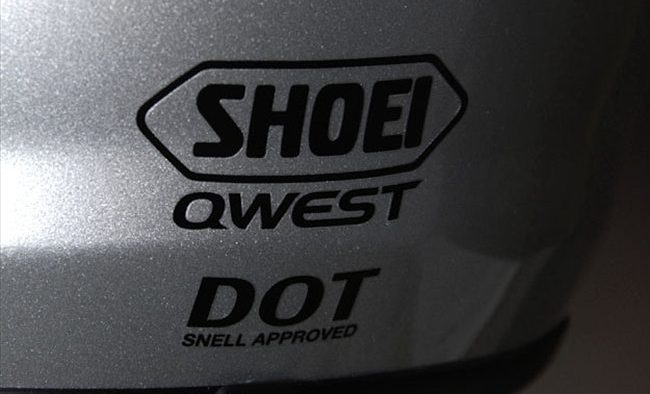
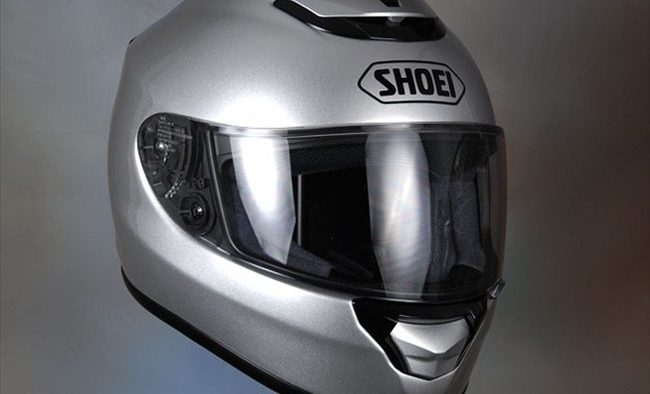
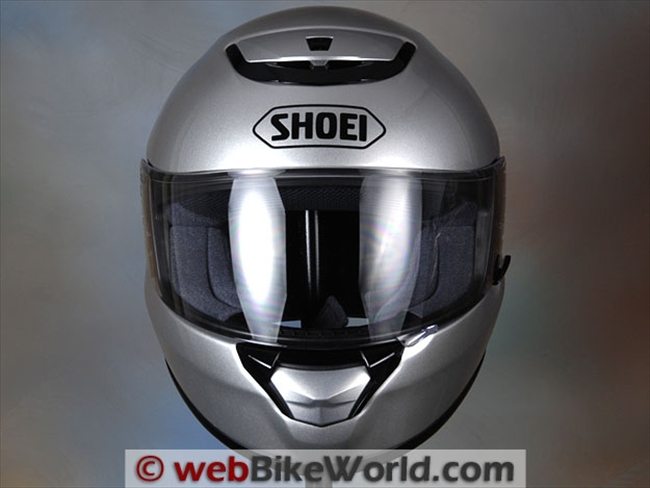
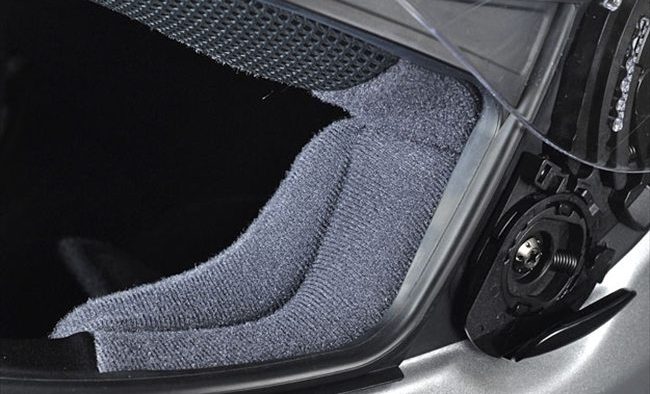
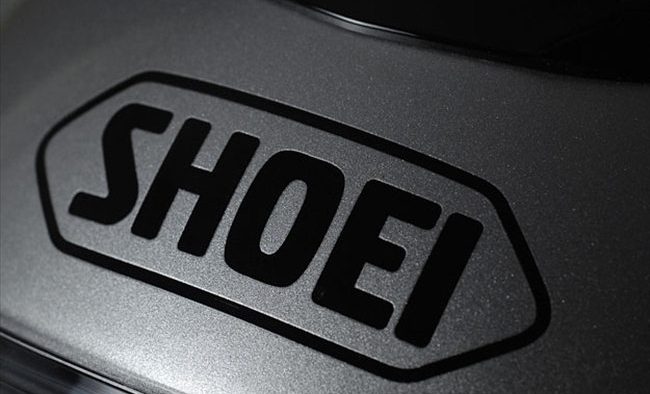
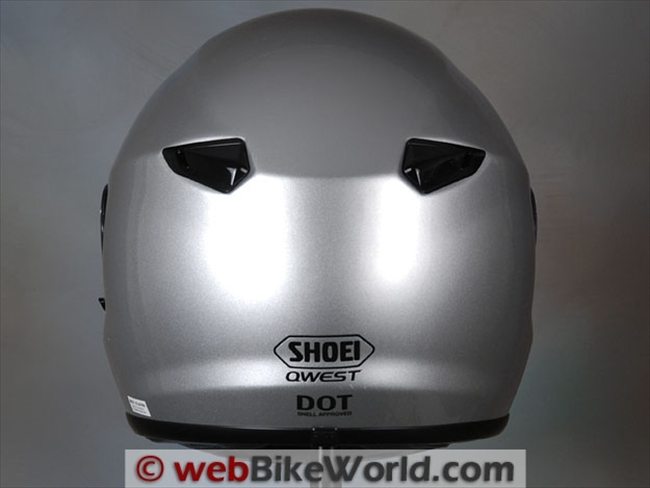

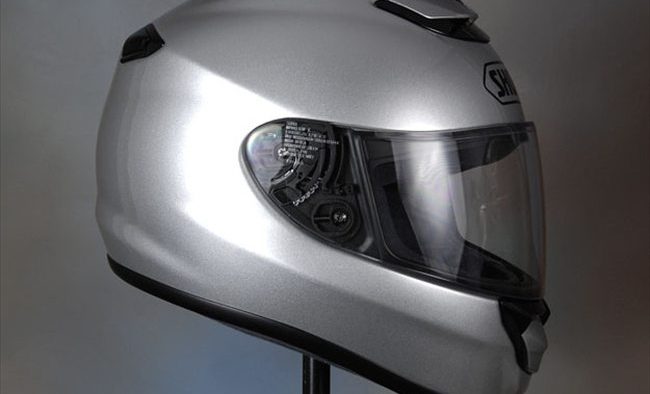
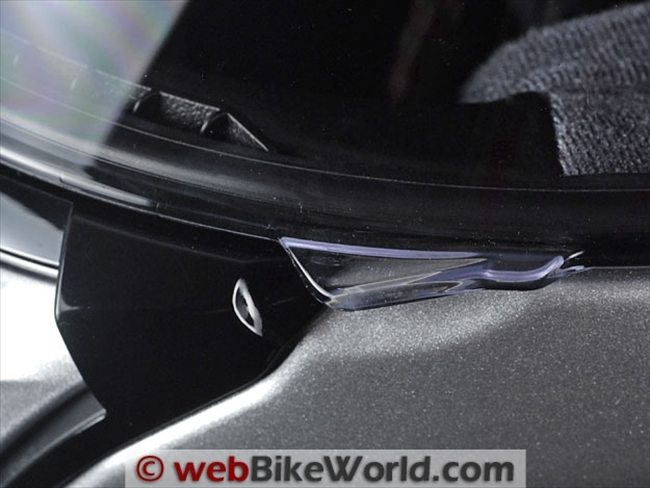


No Comment